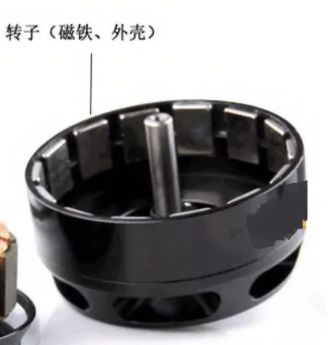What are the common electrical faults and solutions for brushless motor motor automatic rotor loading machine?
1、Sensor failure
Fault phenomenon:
The rotor loading count is inaccurate. This may be because the sensor can not accurately sense the number of rotors passing through, resulting in counting deviation, affecting the accuracy of the subsequent production process.
The loading machine is unable to detect whether the rotor is in the correct position. For example, a sensor failure prevents the machine from recognizing whether the rotor has reached the intended loading position, thus preventing the loading process from starting properly.
Solution:
First check for loose or damaged wiring connecting the sensor. If it is a wiring problem, reconnect or replace the damaged wiring section.
Clean the sensor surface. Dust, oil and other contaminants may interfere with the normal operation of the sensor, use a clean soft cloth to gently wipe the sensing part of the sensor to ensure its surface is clean.
If the sensor itself is damaged, it needs to be replaced with a sensor of the same model. When replacing, pay attention to the installation of the equipment in accordance with the installation instructions for proper installation, including the location of the sensor, the angle and other parameters of the settings.

2、Motor failure
Failure phenomenon:
The motor does not start. It may be due to power supply problems, motor winding damage or control circuit failure, etc. The motor can not start normally, making the whole loading machine stop working.
The motor runs abnormally, such as unstable speed or abnormal noise. Unstable rotational speed will affect the speed and stability of the feeding, and abnormal noise may indicate that the internal parts of the motor are worn out or the motor shaft is not bearing the force evenly.
Solution:
For cases where the motor does not start, check the power supply. Check to see if the power switch is on, if the fuse is blown, and if the power cord is well connected. If the fuse is blown, check for short circuits and other faults, and replace with a suitable fuse after elimination.
If the motor windings are damaged, use an insulation resistance meter to check the insulation resistance of the motor windings. If the insulation resistance is too low, the windings may be damp or have a short-circuit fault, and the motor will need to be dried out or the short-circuit repaired. Severely damaged windings may require rewinding or replacement of the motor.
When the motor is running abnormally, check the motor's bearings. If the bearings are badly worn, they will cause the motor shaft to rotate poorly, producing abnormal noise and unstable speed. At this time, it is necessary to replace the new bearings, and ensure that the installation is correct, add the appropriate amount of grease.
3、Control circuit failure
Failure phenomenon:
The action sequence of the loading machine is confused. For example, the rotor is not yet fully in place to start feeding action, or feeding is not carried out after the next transfer action, which may be due to the control circuit of the relay, contactor and other components failures or PLC (Programmable Logic Controller) program error.
The control signal cannot be transmitted normally. For example, there is no response when the start and stop buttons on the operation panel are pressed, which may be caused by a broken control circuit or a damaged control device.
Solution:
Check the relays and contactors in the control circuit. Look for contacts that are burned out, sticking, or have failed springs. If there is a problem with the contacts, you can use sandpaper to gently sand the abraded contacts or replace the damaged relay or contactor.
For PLC program errors, try re-downloading the program if you have a backup program. At the same time, check whether the input and output signals of the PLC are normal or not, and whether there is any interfering signal that causes the program to be executed incorrectly. Interference can be eliminated by checking the shielding of the signal lines and whether the grounding is good.
Check the connection of the control line to find out whether there is any break or short circuit. Use the resistance of the multimeter to check the line section by section, for the broken point can be reconnected, short-circuit points need to find and eliminate the cause of short-circuit, such as insulation damage.
※ If you still can't solve the problem through the above ways and means, please contact the technical specialist of Xinhui Electromechanical Equipment Co.







